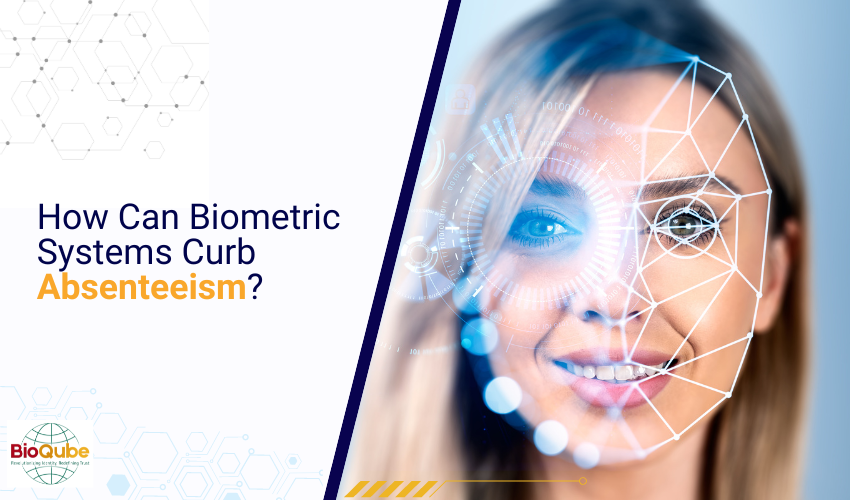
Absenteeism has become a major problem across industries. It hampers the organizational productivity, delays work, and incurs hefty expenses. According to a 2022 Statista report, it was estimated to cost 140 billion Indian rupees. The reason behind this was poor mental health.
While providing a good working environment can significantly diminish this cost, biometric attendance systems can also play a significant role in reducing absence by ensuring real user presence at the designated location.
Increased presenteeism can significantly reduce the workload on coworkers and reduce the stress associated with it, contributing to better mental health. Organizations can achieve many other advantages.
5 Ways Biometric Attendance Systems Can Reduce Absenteeism
Accurate Attendance Record-keeping
Centralized face or fingerprint recognition systems require the user’s physical presence at the designated location, especially if they incorporate liveness detection. The solution ensures attendance accuracy without manual intervention.
With advanced biometric systems, users and administrators can view digital records and even raise requests for regularization. Moreover, the heightened record-keeping system generates reports of excessive absence or overtime, and after that, admins can take necessary action.
On the other hand, users can manage their leftover hours without the hassle of contacting the HR or admin departments.
Removes the Risk of Buddy Punching
Buddy punching occurs when a user marks the attendance of another user even though they aren’t present at the designated location. This practice is common in organizations using traditional attendance management systems such as RFIDs or chip cards.
Incorporating an advanced biometric attendance system into the organization eliminates the risk of buddy punching. Today, CCTV-based face recognition solutions can even track the user’s check-in and checkout without requiring physical contact.
Biometric systems eliminate proxy attendance via buddy punching because they store an individual’s biological characteristics in an encrypted format. The traits are unique and, therefore, hard to forge, especially when using a face recognition solution.
Upkeeps Offsite Activities & Attendance
Organizations often send workers to offsite locations for meetings, events, and other purposes. Such employees don’t usually come to the office, and their working hours can be default marked.
Under such circumstances, the organization’s stakeholders need to be made aware of the actual productivity hours. A face recognition attendance app can significantly help enterprises track the attendance of such workers in real time.
The app will display the employee’s location and allow them to mark check-ins and checkouts using face recognition technology. As a result, workers can also claim their overtime without going through the hassle of asking for attendance logs from a designated person. Simultaneously, employers can ascertain the average time spent on an activity and allocate resources accordingly.
Absence Record & Reasoning
In organizations, certain employees often take frequent leaves and often inform the reporting manager at the last minute. A biometric solution with a leave management system can derive the total absences or leaves in a designated period.
Moreover, it can ascertain the most frequent reason and type of leave applied by an employee. If evaluated at the organizational level, the stakeholders can find the most common reasoning.
The absence record will also show the hours left to complete the minimum attendance and inform the employees about it. By doing so, workers can complete their remaining hours and avoid pay cuts. Moreover, the biometric attendance system can integrate with a payroll solution to create an accurate payslip, showing exact leaves, types of leaves, and the number of days present.
Increases the Dependency on the User
As we mentioned above, a biometric attendance system is foolproof and tamperproof. Therefore, it requires the real-time presence of the user at the location wherein it is placed or captures the area wherever the user accesses the attendance app.
So, the dependency of upkeeping attendance and marking attendance occurs on the user. This eliminates the risk of human errors often incurred while managing accurate attendance logs or registers.
Simultaneously, users become more active in maintaining attendance logs and hardly need to raise regularization requests. Face-recognition CCTV-based solutions are even more handy for enterprises and employees as they can instantaneously capture check-in and checkout logs without the user having to wait in a queue, increasing productivity hours.
Conclusion
Biometric attendance systems can reduce absenteeism in organizations. They eliminate the risk of proxy attendance and demand the user’s real-time presence at the designated location, as the solutions capture the biological traits that remain unique to individuals.
Moreover, face recognition solutions integrated with CCTV or IP cameras can enhance attendance accuracy by capturing the first in and last out timings, bringing transparency. Today, attendance apps can even capture the real-time location of offsite workers, providing the same benefits.
To summarize, biometric attendance solutions can reduce absenteeism, boost employee morale and convenience, and reduce organizational loss incurred through frequent absences by certain employees. Schedule a demo with us to learn the advantages of Bioqube’s contactless biometric attendance and access management solutions.